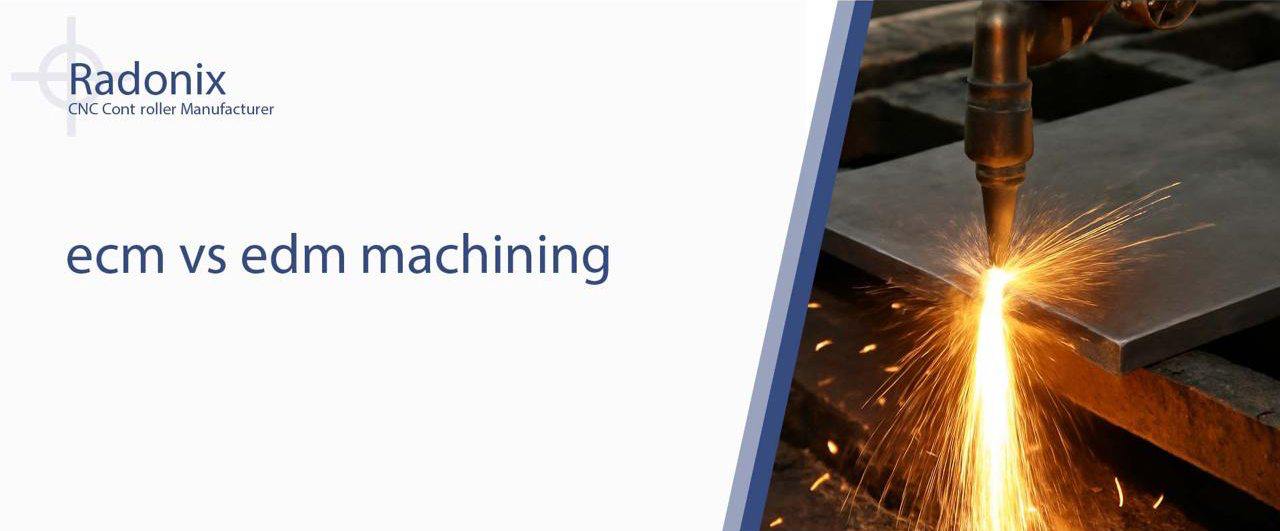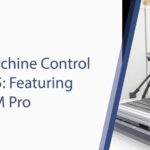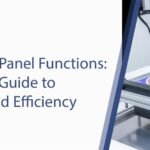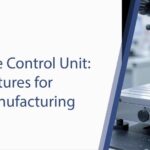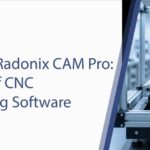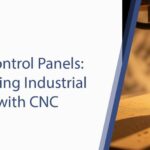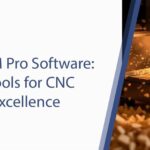In the advanced world of precision manufacturing, conventional machining methods like milling and turning often fall short.
They struggle to handle the complex geometries, extreme hardness, and sensitive material properties of exotic alloys and superalloys. This has led to the rise of non-traditional machining processes, with ECM vs EDM machining being two of the most powerful and widely used.
While both ECM (Electrochemical Machining) and EDM (Electrical Discharge Machining) are non-contact processes that leverage electrical energy, their fundamental principles, capabilities, and ideal applications are worlds apart.
Choosing the right method is critical to achieving the desired outcome, whether it’s a flawless surface finish for a medical implant or a complex internal cavity for an aerospace component.
At Radonix, we understand the nuances of these technologies and are here to help you navigate this choice.
This in-depth guide will provide a head-to-head comparison of ECM vs EDM machining, breaking down their processes, pros and cons, and helping you determine which advanced machining solution is the best fit for your specific needs.
Understanding the Contenders: What is EDM Machining?
EDM (Electrical Discharge Machining), also known as spark machining, is a thermal process that removes material through a series of controlled electrical sparks.
A tool, or electrode, is brought close to the electrically conductive workpiece, which is both submerged in a dielectric fluid (typically deionized water or oil).
A voltage is applied, and when the gap between the tool and workpiece is small enough, a spark is generated.
This spark creates a localized plasma channel that vaporizes and melts a tiny amount of material from the workpiece. The dielectric fluid then flushes away the molten and vaporized particles, allowing the process to repeat. The two primary types of EDM are:
- Sinker EDM (or Die Sinking EDM): Uses a pre-shaped electrode to create a reverse impression of the tool in the workpiece. It’s excellent for creating complex cavities, blind pockets, and internal features.
- Wire EDM: Uses a thin, continuously fed wire as the electrode to cut a programmed profile through the workpiece. It’s essentially a high-precision bandsaw for conductive materials, perfect for intricate cuts, gears, and dies.
EDM machining is renowned for its ability to cut extremely hard materials, even after they have been heat-treated, since the process doesn’t rely on physical force.
Understanding the Contenders: What is ECM Machining?
ECM (Electrochemical Machining) is an electrochemical process, often described as “reverse electroplating.” It removes material through anodic dissolution, a process that is entirely non-thermal.
The workpiece (the anode) and a shaped tool (the cathode) are placed in a gap filled with an electrically conductive electrolyte fluid. When a DC current is applied, the workpiece material is dissolved atom by atom and carried away by the flowing electrolyte.
Because there is no heat and no physical contact between the tool and the workpiece, ECM machining offers unique advantages.
The tool never touches the workpiece, so there is no tool wear. The process is also stress-free and leaves behind no thermal damage.
The electrolyte fluid plays a crucial role, not only by conducting the current but also by flushing away the metal hydroxide “sludge” that is formed.
ECM machining is particularly valued for its ability to machine complex shapes and produce an exceptional surface finish without introducing any thermal or mechanical stress into the part.
ECM vs EDM Machining: A Head-to-Head Comparison
The choice between ECM vs EDM machining hinges on several key factors. Below is a detailed breakdown of how these two advanced processes stack up against each other.
| Feature | EDM Machining | ECM Machining |
| Material Removal | Thermal erosion (spark discharge) | Electrochemical dissolution |
| Material Limitations | Any electrically conductive material, regardless of hardness. | Any electrically conductive material, regardless of hardness. |
| Surface Integrity | Creates a Heat-Affected Zone (HAZ) and a recast layer due to high heat. Requires post-processing for critical applications. | No thermal damage or mechanical stress. Produces a smooth, burr-free, and stress-free surface. |
| Speed & Efficiency | Can be slow, especially for removing large amounts of material. Speed is affected by material hardness. | Very fast at bulk material removal. Speed is independent of material hardness. |
| Tool Wear | The electrode wears down over time and must be replaced or compensated for. Tool wear is a significant factor in accuracy and cost. | Virtually zero tool wear. The tool (cathode) is not consumed in the process. |
| Precision | Extremely high precision and accuracy, capable of intricate details and sharp corners. | High precision, but corners and features can be rounded due to the nature of the electrochemical process. |
| Applications | Molds & Dies, sharp internal corners, fine holes, gear and spline cutting. | Aerospace turbine blades, medical implants, deburring, creating complex internal cavities. |
| Tooling Cost | Electrodes for Sinker EDM can be complex and costly. Wire EDM uses a simple, disposable wire. | The cathode tool is often more complex and expensive to manufacture but does not wear out. |
| Environmental Impact | Dielectric fluid and vaporized metal particles can require careful handling. | Electrolyte fluid is corrosive and the metal hydroxide sludge must be properly treated. |
The Critical Difference: Thermal vs Electrochemical Process
This is the most important distinction in the ECM vs EDM machining debate. EDM’s thermal nature can create a recast layer—a solidified layer of melted material—and a heat-affected zone (HAZ) on the part’s surface. For applications where part integrity is paramount, such as high-stress aerospace components, this thermal damage is unacceptable and requires secondary processes like grinding or polishing.
In contrast, ECM machining leaves no thermal damage, no recast layer, and no micro-cracks. The resulting surface is clean, stress-free, and often superior in quality, making it the preferred method for parts that cannot be compromised by heat.
A Look at Accuracy and Detail
For sheer intricate detail and sharp internal corners, EDM machining often has the edge. The spark discharge is highly localized, allowing for exceptionally sharp features. Wire EDM, for example, is the undisputed champion for cutting precise gear teeth and sharp internal pockets.
ECM machining, while incredibly precise, works with a flowing electrolyte. This can cause some rounding of internal and external corners, making it less suitable for applications that demand perfectly sharp features. However, for a superior surface finish across a large, complex surface, ECM is often unmatched.
Where Each Process Shines: Ideal Applications
The final decision in the ECM vs EDM machining comparison often comes down to the specific application.
Ideal Applications for EDM Machining
- Tool and Die Making: Sinker EDM is the go-to for creating complex cavities and molds for plastics, forging, and stamping.
- Aerospace: Machining intricate components from hard, high-temperature alloys like Inconel and titanium.
- Micro-machining: Sinker EDM can create extremely small holes and features that are impossible with conventional tools.
- Medical Instruments: Cutting precise features in surgical tools and implants from stainless steel and titanium.
Ideal Applications for ECM Machining
- Aerospace Turbine Blades: ECM is the preferred method for machining complex turbine blade shapes and cooling holes in nickel alloys, as it introduces no thermal stress that could compromise the blade’s structural integrity.
- Deburring: ECM can automatically and efficiently remove burrs from complex parts, even in hard-to-reach areas, without damaging the workpiece.
- Medical Devices: Creating burr-free and stress-free parts for medical implants where surface integrity is crucial for long-term reliability in the human body.
- Automotive: ECM is used for machining fuel injectors, camshafts, and other parts where a smooth, stress-free surface is essential for performance and durability.
Choosing Your Partner: How Radonix Helps
Navigating the choice between ECM vs EDM machining requires a deep understanding of both technologies and the unique requirements of your project. The right choice can save you time, reduce costs, and ensure the final product meets the highest standards of quality.
At Radonix, we are experts in a range of advanced machining solutions, including both EDM and ECM.
Our team works closely with you to analyze your material, part geometry, tolerance requirements, and budget to recommend the most effective and efficient process. We believe that choosing the right technology is the first step toward a successful outcome.
Whether your project demands the pristine, stress-free finish of ECM machining or the intricate, high-precision cuts of EDM machining, we have the expertise and the technology to deliver exceptional results.
Ready to find the perfect machining solution for your next project? Contact Radonix today to discuss your specific needs and discover how our expertise in ECM vs EDM machining can benefit your business.
Contact Us:
- E-Mail: info@radonix.com
- Phone: +90 (553) 920 5500

